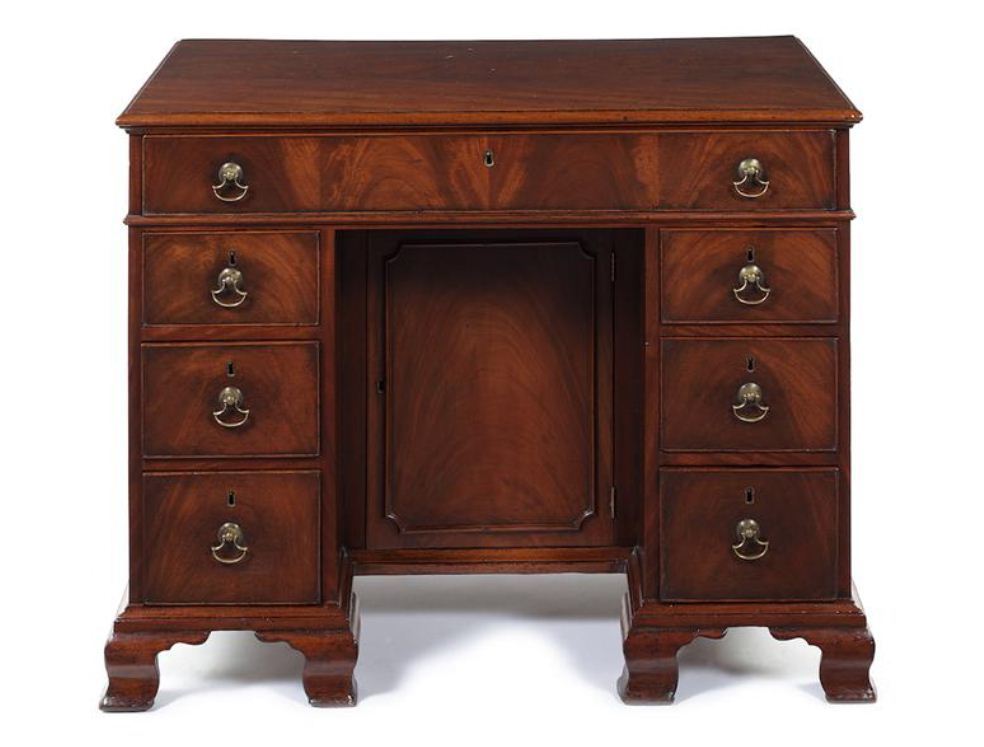MENTION ‘CHIPPENDALE’ and folk sit up, yawns are stifled and eyes widen. He is, of course, the doyen of English furniture designers and cabinetmakers.
Working in London from the mid-18th Century, Thomas Chippendale stamped his style on English design, and his Gentleman and Cabinet-Maker’s Director of 1754 ensured his furniture was copied by manufacturers across Britain and beyond. A year later Chippendale set up his permanent workshop in St Martin’s Lane, from where he was able to service the aristocratic and wealthy residents of the expanding west end.
Thanks to his influential Director, and the fact that little extant furniture is directly attributable to the master himself, high-end objects are often ‘attributed’ to Chippendale.
So to The Pedestal auction company’s sale of furniture at Moor Park Mansion, Hertfordshire on March 14.
One of the highlights was a George III mahogany kneehole dressing table, attributed to Thomas Chippendale.
This elegant little piece had a rectangular moulded top above a flame-figured frieze drawer enclosing seven divisions.
The recessed kneehole had a panelled door enclosing a shaped shelf, flanked by three short drawers to each side, each with dangly handles. All the above sat snugly on ogee bracket feet and came in at 38 inches wide, 22in deep and 32in high.
The dressing table was provenanced to the late Hon Mrs Bruce (1921-2012), wife of the late Hon Bernard Bruce, the only son of the 9th Earl of Elgin, 13th Earl of Kincardine. The Bruces lived in Culross Abbey House, some seven miles west of Dunfermline, now considered to be one of the earliest classical buildings in Scotland.
The dressing table can be closely compared with a George III mahogany ‘buroe’ table by Thomas Chippendale supplied c1760 to Ninian Home for Paxton House, Berwickshire, at a cost of £6.12s. This appeared at Christie’s in London in May 2003, where it sold for a thumping £77,675, including premium.
A comparable George III mahogany kneehole desk, again attributed to Chippendale, was sold by Christie’s in January, 2009 for £16,250.
Even with half of the preceding 28 lots failing to find a buyer and being passed, the £1000-£1500 estimate on the Chippendale piece seemed deeply conservative. It duly sold for a more respectable £4000.
